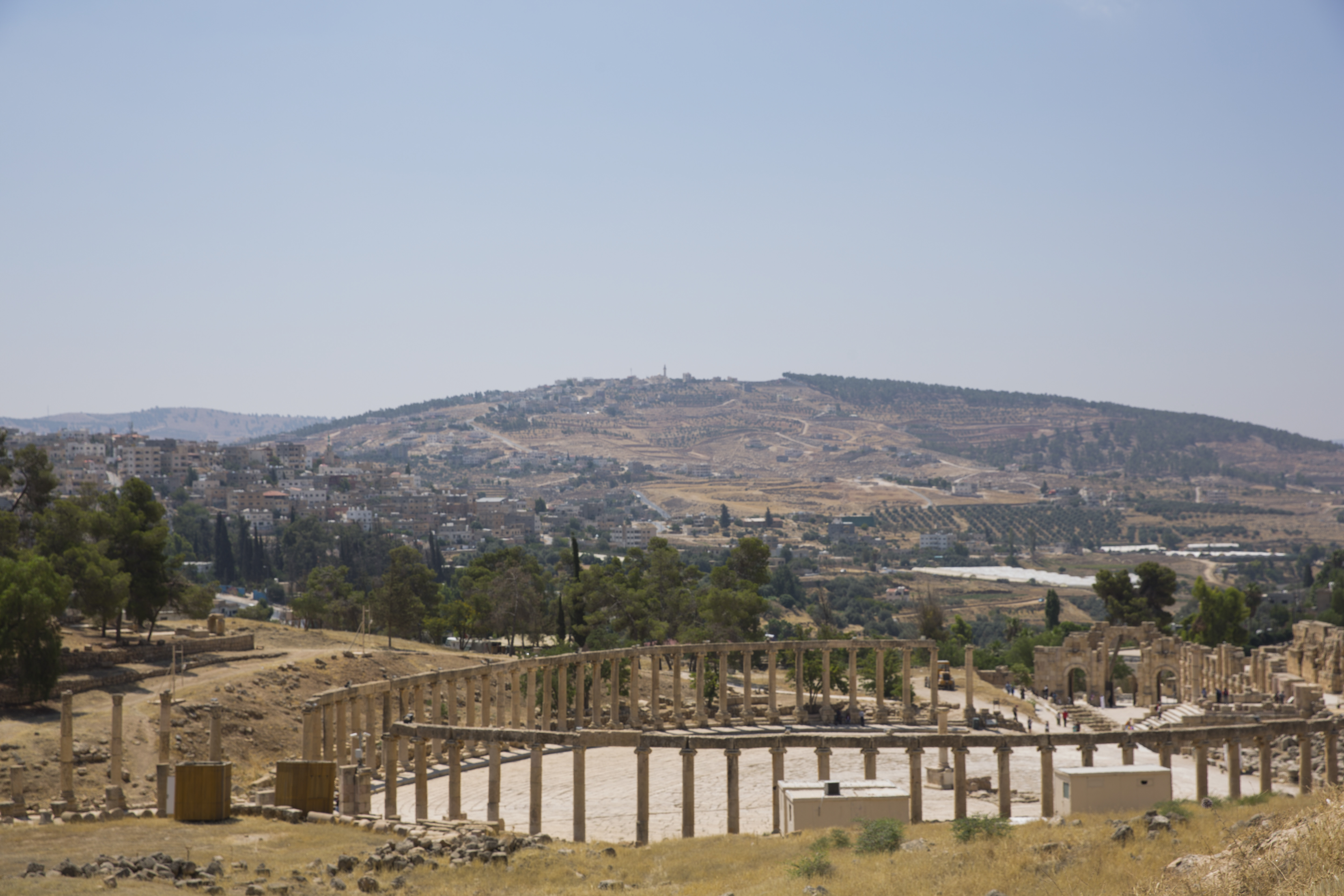Discovery at Abila: Students Uncover Historic Inscription
By Ella Fletcher
January 12, 2024

Two days before the 2023 Abila excavation season was to end, students from JBU and Lipscomb University, dig staff and local archaeologists made a significant discovery.
Laying roughly two inches below the surface of a previously excavated area, an inscription on the floor of the atrium in the Area G Church Complex revealed the name of a bishop not previously recorded in history. The discovery adds Bishop Epiphanios to the list of three attested bishops of Abila. It also provides an absolute date for the completion of the complex.
Records indicate Jesus traveled through the Decapolis, a group of 10 cities in Jordan, Israel and Syria with a rich history dating back at least to 3200 B.C. One of those cities, Abila of the Decapolis, is thought to have been inhabited for nearly 5,000 years.
After a visit to the area in 1979, Harold Mare, Ph.D., of Covenant Seminary in St. Louis, Missouri, applied to the Department of Antiquities of Jordan for a permit to conduct an archaeological survey at Abila. Surveying began in 1980.
Dave Vila, Ph.D., JBU distinguished professor of religion and philosophy, has excavated at the site since 1990 and served as director since 2008.
The Abila site was an expanse of farmland before the land survey in 1980 discovered the history buried underneath. The Department of Antiquities of Jordan owns about 170 acres within the site. Still, Vila says local farmers own about another 100 acres that were part of the ancient city and its suburbs, and they are reticent to sell their land.
Fortunately, future generations did not build modern cities on the site.
“Many ancient archaeological sites have modern cities that have been built on top of them,” said Vila. “We are very fortunate that no modern construction is on top of our site. We have easy and open access to the entire ancient city.”
The site was no small suburb and had a population the size of Siloam Springs at its height around the fifth and sixth centuries A.D. Natural erosion covered the site after it lost its inhabitants in the 11th or 12th century.
Populations this large and continuous leave much to uncover, and the Abila of the Decapolis site is no exception. Despite 43 years of excavation, Vila estimates that excavators have only uncovered 1 or 2% of the area.
Since the 2006 creation of JBU’s Jordan Summer Studies Program, 250 students, faculty, staff and alumni have visited Abila and participated in history.
Beginning with the 2023 season, The Lanier Center for Biblical Archaeology at Lipscomb University in Nashville, Tennessee, joined the project. The center offers master’s and doctoral degrees in archaeology, which brings students and faculty with specializations that contribute greatly to the excavation.
The six-week program, held on odd-dated years, allows JBU students in any major to join the Abila excavation while earning up to 12 university core curriculum credits. Over the years, discoveries have included five churches, dozens of tombs, a Roman bath complex, a massive Roman bridge, 15 miles of water tunnels under the city and hundreds of thousands of pottery shards.
These programs are possible because a handful of anonymous donors established an academic endowment that now holds approximately $4 million in funding. Along with excavation and personnel costs, the investment income subsidizes the student cost of the Jordan Summer Studies Program and the Bible Lands Study Trip, a four-week tour of sites of historical and biblical significance in even-numbered years. It also funds the annual Abila Lecture in Biblical Archeology and, in 2022, created the Abila Museum in the Walker Student Center.
Vila said the most impactful part of the excavation work is not the discoveries but the relationships that students build with the Jordanians they work alongside, most of whom are Muslims. The Jordanians invite students into their homes for evening tea and meals, and many friendships are forged.
“Students come back with a renewed appreciation for the scriptures, a much more sensitive understanding of the modern Middle East and a great love for the people who live in the land today,” said Vila.
The Abila project exemplifies the vital role that academic endowments play in advancing knowledge and enriching the educational journey of JBU students, preparing them for future academic and professional endeavors.
Translation of inscription below: In the time of [our] holy father Epiphanios, the Bishop. The construction and adornment from the foundations of [this court] were carefully completed. In the month
of April, during the 13th indiction, in the year 643 [AD 580]. Lord, praise to you.

